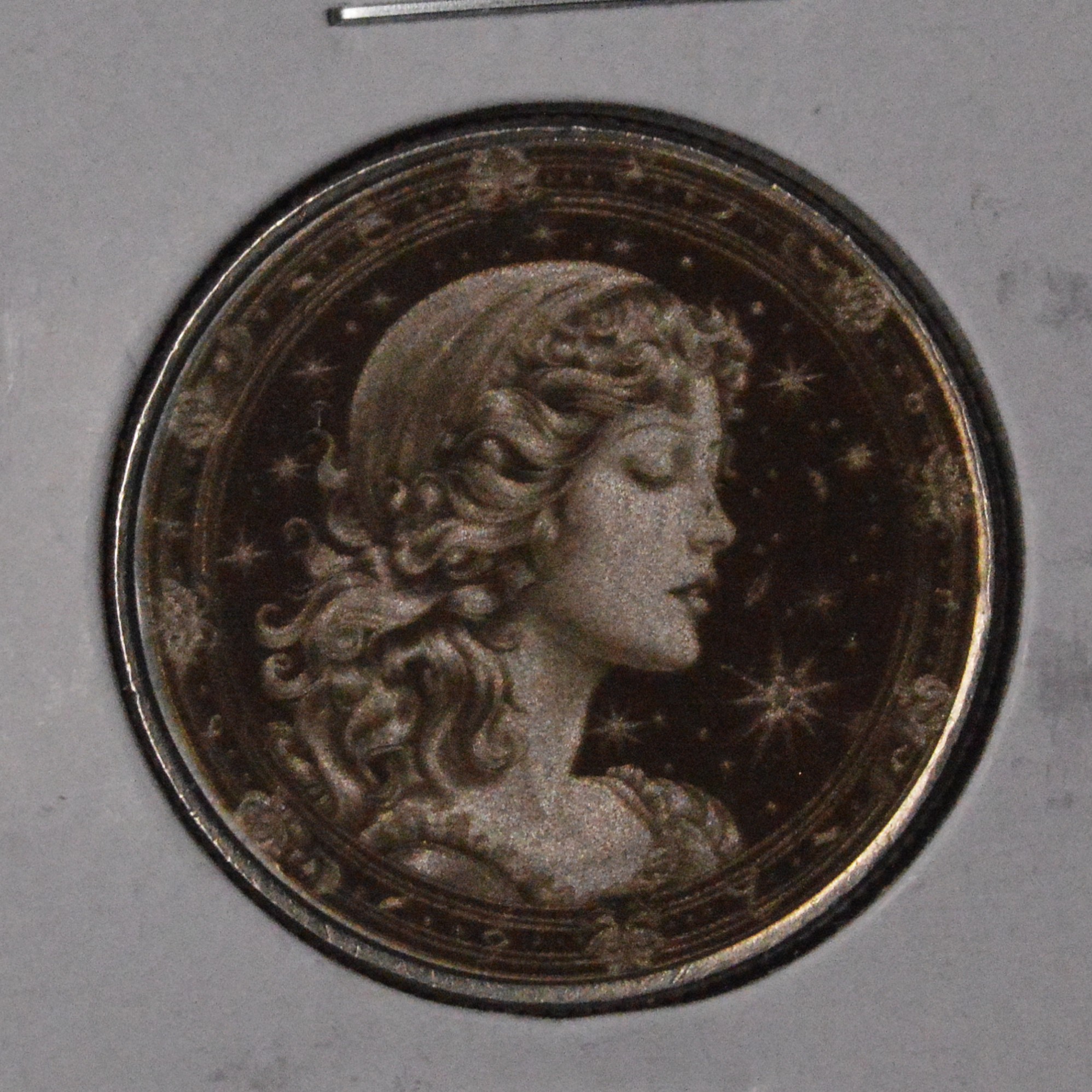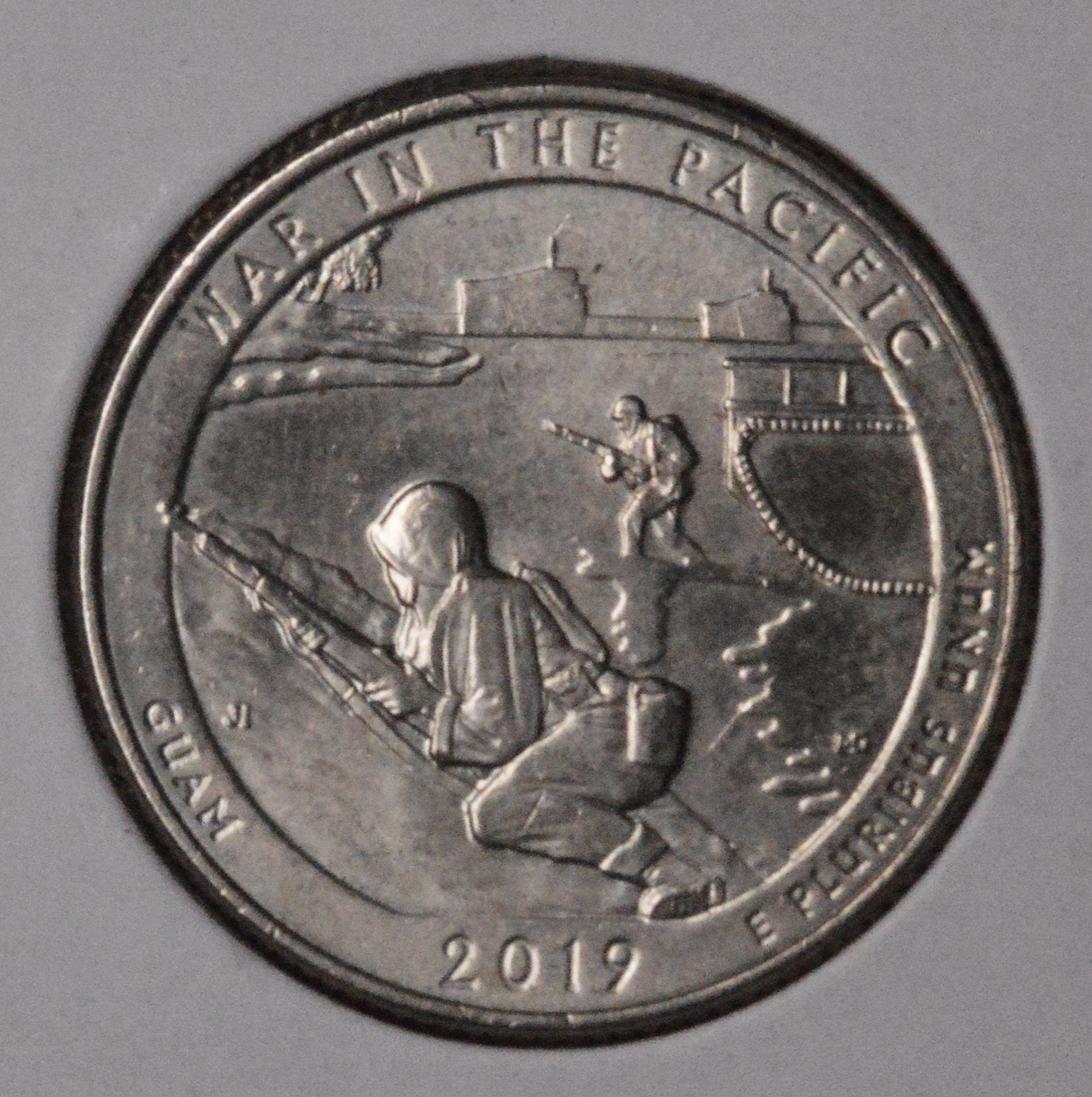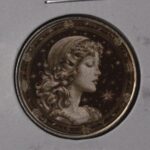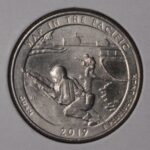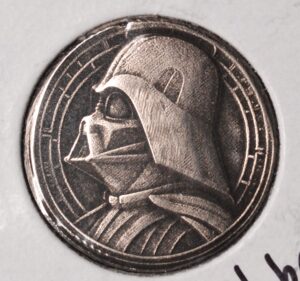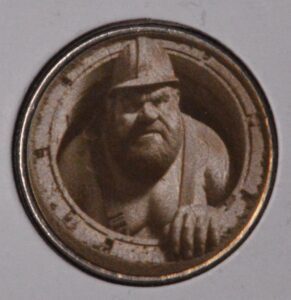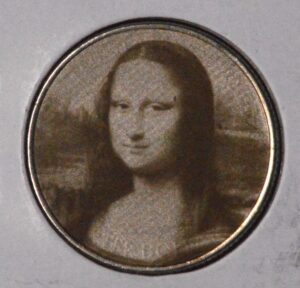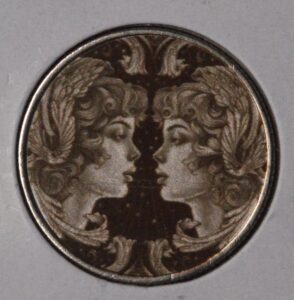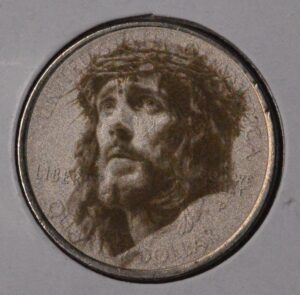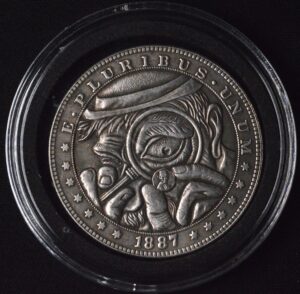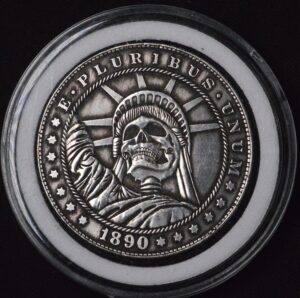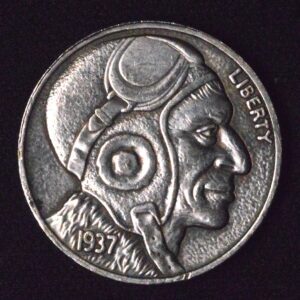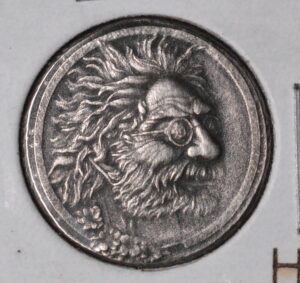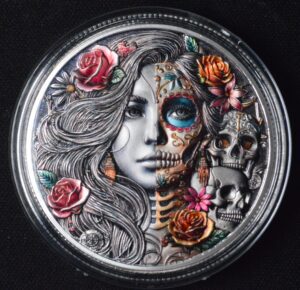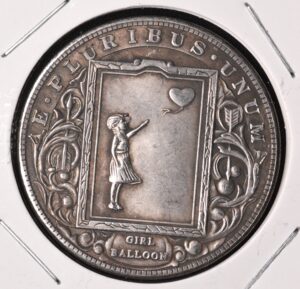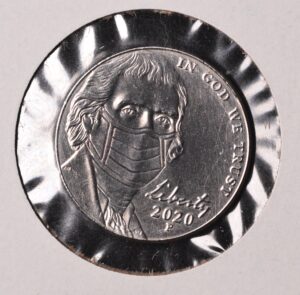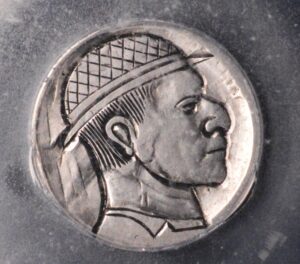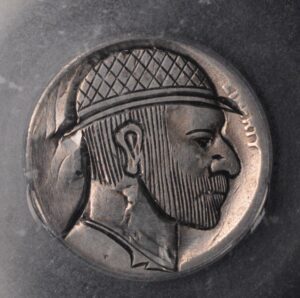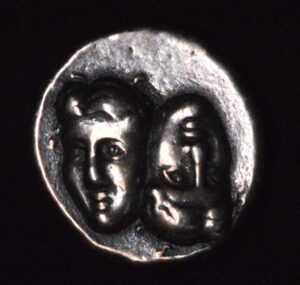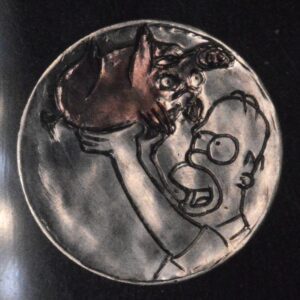Description
Early 1920s designs on Washington Quarter hobo art reflect a creative extension of the long-standing tradition of coin alteration, popularized initially by Buffalo nickels in the early 20th century. While original hobo nickels mainly used 1913–1930s Buffalo nickels due to their large, soft metal surfaces, some modern artists have expanded their craft to other coins like Washington quarters, blending historical techniques with newer coin designs.
The 1920s hobo art style often features intricate portraits, caricatures, and symbolic motifs carved into the coin’s face, replacing or modifying the original image. For Washington quarters, this means transforming the iconic George Washington portrait into artistic renderings, frequently stylized to evoke the early 20th-century aesthetic: classic hats, facial hair, or vintage clothing themes. The early 1920s period inspired many motifs in folk art, emphasizing detailed, expressive faces and storytelling elements in the carving.
Artists use carving tools like chisels, gravers, and punches to create bas-relief images, selectively removing metal to produce textures and depth. Many quarters bear signatures or initials of their artists, sometimes referencing the original hobo nickel carvers like Bert Wiegand or George “Bo” Hughes, who influenced later generations. The combination of classic coin features and personalized carving embodies both practical artistry and cultural expression.
Collectors value these early-style Washington quarter hobo art pieces for their rarity and connection to American folk art history. Although quarters have harder surfaces compared to Buffalo nickels, advances in engraving tools make detailed work possible. The coins function as miniature sculptures capturing an era’s spirit, bridging the divide between traditional numismatics and creative, individualized art.
In summary, early 1920s design on Washington Quarter hobo art represents a homage to classic coin carving traditions applied to newer coinage. These pieces reflect a blend of historic folk art techniques and 20th-century aesthetics, resulting in unique, collectible works that honor both craftsmanship and cultural storytelling.
Early 1920s designs on Washington Quarter hobo art reflect a creative extension of the long-standing tradition of coin alteration, popularized initially by Buffalo nickels in the early 20th century. While original hobo nickels mainly used 1913–1930s Buffalo nickels due to their large, soft metal surfaces, some modern artists have expanded their craft to other coins like Washington quarters, blending historical techniques with newer coin designs.
The 1920s hobo art style often features intricate portraits, caricatures, and symbolic motifs carved into the coin’s face, replacing or modifying the original image. For Washington quarters, this means transforming the iconic George Washington portrait into artistic renderings, frequently stylized to evoke the early 20th-century aesthetic: classic hats, facial hair, or vintage clothing themes. The early 1920s period inspired many motifs in folk art, emphasizing detailed, expressive faces and storytelling elements in the carving.
Artists use carving tools like chisels, gravers, and punches to create bas-relief images, selectively removing metal to produce textures and depth. Many quarters bear signatures or initials of their artists, sometimes referencing the original hobo nickel carvers like Bert Wiegand or George “Bo” Hughes, who influenced later generations. The combination of classic coin features and personalized carving embodies both practical artistry and cultural expression.
Collectors value these early-style Washington quarter hobo art pieces for their rarity and connection to American folk art history. Although quarters have harder surfaces compared to Buffalo nickels, advances in engraving tools make detailed work possible. The coins function as miniature sculptures capturing an era’s spirit, bridging the divide between traditional numismatics and creative, individualized art.
In summary, early 1920s design on Washington Quarter hobo art represents a homage to classic coin carving traditions applied to newer coinage. These pieces reflect a blend of historic folk art techniques and 20th-century aesthetics, resulting in unique, collectible works that honor both craftsmanship and cultural storytelling.
Early 1920s designs on Washington Quarter hobo art reflect a creative extension of the long-standing tradition of coin alteration, popularized initially by Buffalo nickels in the early 20th century. While original hobo nickels mainly used 1913–1930s Buffalo nickels due to their large, soft metal surfaces, some modern artists have expanded their craft to other coins like Washington quarters, blending historical techniques with newer coin designs.
The 1920s hobo art style often features intricate portraits, caricatures, and symbolic motifs carved into the coin’s face, replacing or modifying the original image. For Washington quarters, this means transforming the iconic George Washington portrait into artistic renderings, frequently stylized to evoke the early 20th-century aesthetic: classic hats, facial hair, or vintage clothing themes. The early 1920s period inspired many motifs in folk art, emphasizing detailed, expressive faces and storytelling elements in the carving.
Artists use carving tools like chisels, gravers, and punches to create bas-relief images, selectively removing metal to produce textures and depth. Many quarters bear signatures or initials of their artists, sometimes referencing the original hobo nickel carvers like Bert Wiegand or George “Bo” Hughes, who influenced later generations. The combination of classic coin features and personalized carving embodies both practical artistry and cultural expression.
Collectors value these early-style Washington quarter hobo art pieces for their rarity and connection to American folk art history. Although quarters have harder surfaces compared to Buffalo nickels, advances in engraving tools make detailed work possible. The coins function as miniature sculptures capturing an era’s spirit, bridging the divide between traditional numismatics and creative, individualized art.
In summary, early 1920s design on Washington Quarter hobo art represents a homage to classic coin carving traditions applied to newer coinage. These pieces reflect a blend of historic folk art techniques and 20th-century aesthetics, resulting in unique, collectible works that honor both craftsmanship and cultural storytelling.
CUSTOMER FEEDBACK








Related Products & Newly Released!
-
$399.00




SHIPPING POLICY
Your order is shipped from the United States with USPS tracking within one business day.
14 Day Return Policy
You can return your item back within
14 days of the purchase

Secure payments
Your payments are 100% secure and are processed through Square or PayPal on a protected security network.
SHIPPING POLICY
FREE International and Domestic (United States) shipping. Your order is shipped with USPS tracking 24 hours after you order.
14 Day Return Policy
You can return your item back within
14 days of the purchase

Secure payments
Your payments are 100% secure and are processed through Square or PayPal on a protected security network.
RESOURCES
support
Get Fresh Articles!
Sign up now to receive our articles for the latest insights and promotions!
RESOURCES
support
Get Fresh Articles!
Signup our newsletter to get update insight or promotions.


